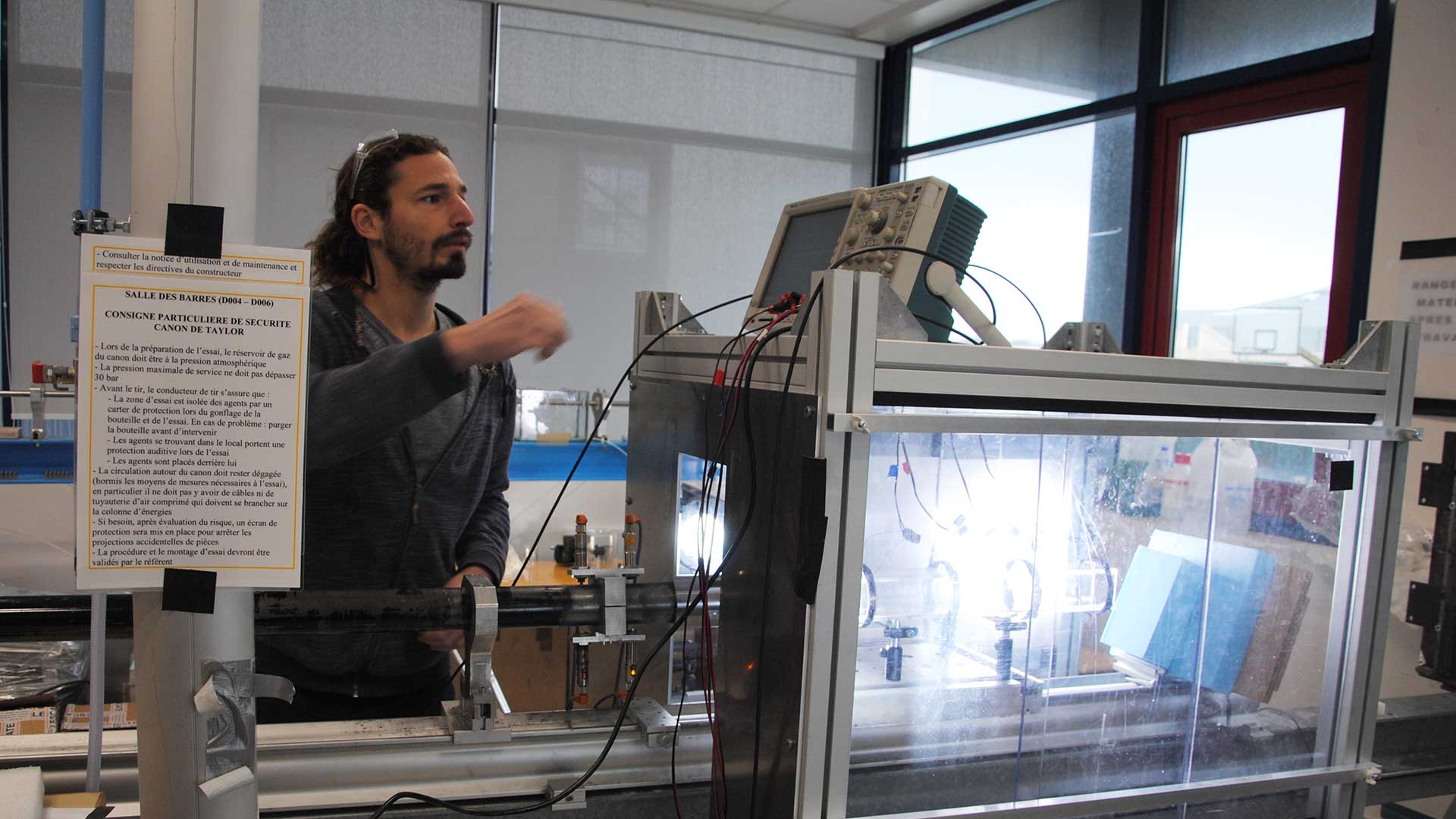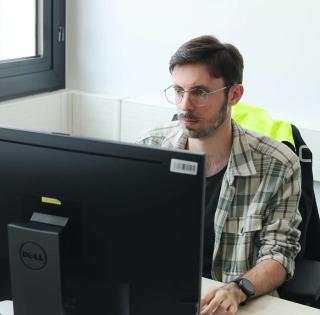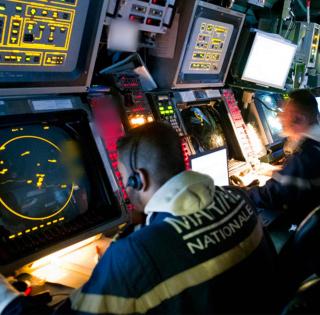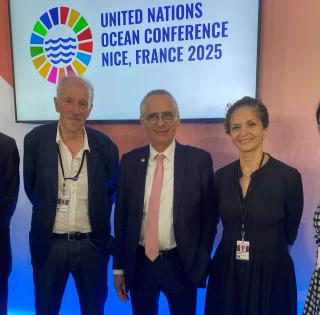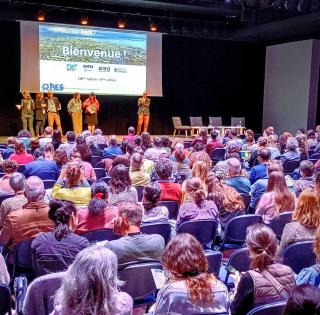
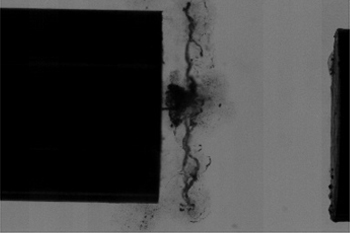
Better understanding and measuring these mechanical effects: an essential first step.
At ENSTA Bretagne, the team of the IRDL "Fluids, Structures and Interactions" research cluster has a technological platform provided with rare, costly instruments: shock tube, gas launchers, laser cannon, Hopkinson bar, laser Doppler measurement bench, pressure sensors, high-speed cameras, etc.
Researchers can thus reproduce impacts at more than 1000 m/s, measure speeds of several km/s, and reproduce the blast effect generated by 1 kg of TNT at 1 m.
The research team has developed specific knowledge in the interaction of a shock wave with a two-phase medium.
Covering an explosive with an aqueous foam such as shaving foam considerably attenuates the blast wave and slows down fragments
explained Michel Arrigoni, a professor in charge of the IFDL "Structures, Fluids and Interactions" cluster on the ENSTA Bretagne site.
In particular, this work has involved two PhDs (PhD defended by Carole Breda, 2015; Aymeric Reinders's PhD in progress).
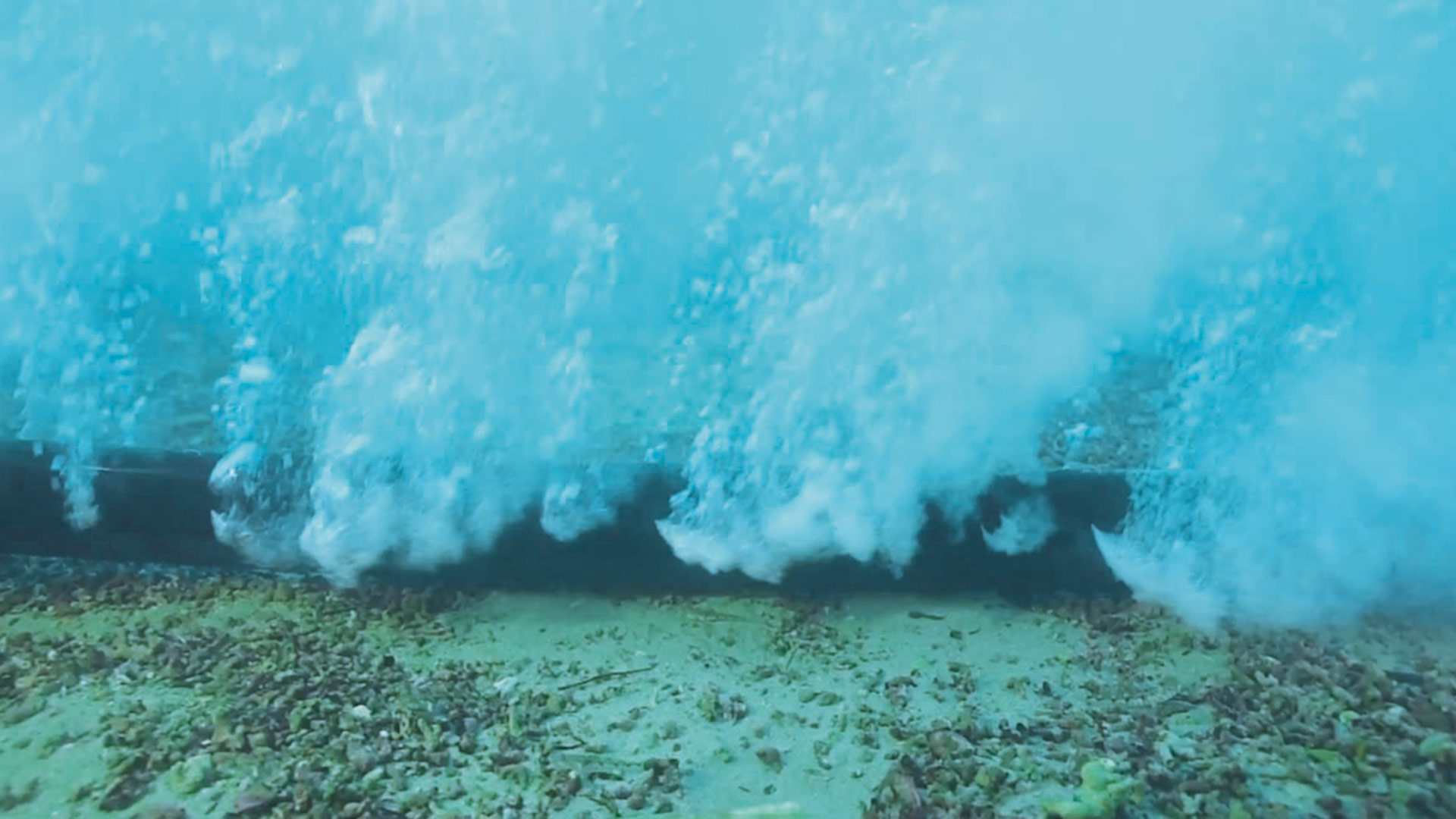
In the marine environment, inserting a bubble curtain in front of an explosive located underwater attenuates the shock wave imparted in the water (Hervé Grandjean's 2012 PhD, RESIBAD project).
Understanding the mechanisms following the penetration of a bullet in a liquid tank, known as hydrodynamic water hammer, has allowed the development of a semi-analytical model that significantly speeds up impact strength calculations (Thomas Fourest's PhD, 2015).
The most effective ballistic protective devices now take the form of multi-material assemblies.
It is therefore crucial to focus on the performance of assemblies under dynamic stresses such as ballistic impact. This area is jointly explored by researchers from the "Structures, Fluids and Interactions" and "Multi-material assemblies" clusters within the Dupuy de Lôme Research Institute.
Research has been jointly conducted on:
- the effects of impacts on adhesion (Gilles Tahan's PhD, 2018; "RAPID CIBLES" (fast targets) project
- ballistic protective devices and have allowed the characterization of new materials based on PolyEthylene (COMPADD, DYNACOMPPE) and transparent composites (ANR TRIBAL), protective devices using shock cavitation (ANR CACHMAP, ANR PROBALCAV, NIDACHOC),
Researchers have also focused on hypervelocity impacts, which are becoming a threat to space systems. They were able to provide an approach to modeling space shields with the CEA, confirmed by experimentation (Vincent Jaulin's PhD, 2021).
les effets des chocs sur l’adhérence (thèse de Gilles Tahan, 2018 ; Projet RAPID CIBLES)
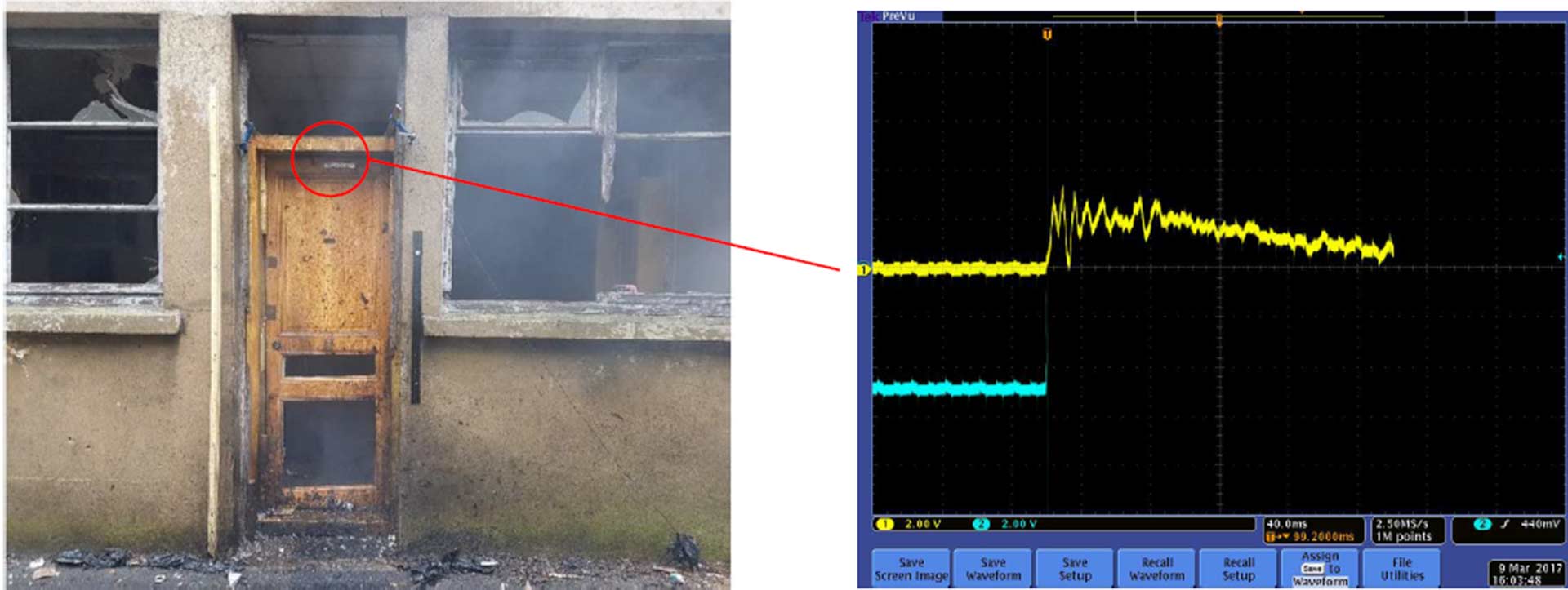
Experiments to confirm models
With experiments being used to give credibility to modeling, the team defined a method and a criterion for considering or otherwise the fluid-structure interaction in the modeling of a civil engineering infrastructure, in cooperation with the Necs-Sixtens company in the Vinci group (Pierre Legrand's PhD, 2020).
Based on this experiment, researchers at ENSTA Bretagne, in association with INERIS, LaMé and Nuvia, a subsidiary of Vinci, have worked on a selection of materials that are both effective in terms of thermal insulation and in providing protection against explosions (ANR MAPSEA).
Based on these same tools, the team took an interest in an industrial problem involving considerably increasing the production rate of large aluminum parts for aeronautical structures for the world leader AIRBUS (Jérémie Tartière's PhD, 2022).
Currently, a PhD conducted within the cluster aims to consider the fluid/structure interaction in the ballistics of new generation ammunition with the CTAI company (Marion Brateau's PhD in progress).






